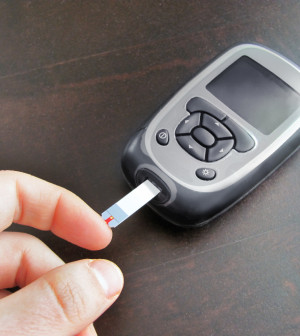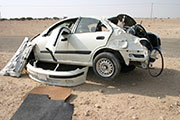- Double Mastectomy May Offer No Survival Benefit to Women With Breast Cancer
- Toxic Lead Found in Cinnamon Product, FDA Says
- Certain Abbott Blood Sugar Monitors May Give Incorrect Readings
- Athletes Can Expect High Ozone, Pollen Counts for Paris Olympics
- Fake Oxycontin Pills Widespread and Potentially Deadly: Report
- Shingles Vaccine Could Lower Dementia Risk
- Your Odds for Accidental Gun Death Rise Greatly in Certain States
- Kids From Poorer Families Less Likely to Survive Cancer
- Tough Workouts Won’t Trigger Cardiac Arrest in Folks With Long QT Syndrome
- At-Home Colon Cancer Test Can Save Lives
Multiple Drug Use Fueling Drugged-Driving Fatalities: Report


Drugged drivers involved in fatal crashes in the United States are more likely to test positive for prescription drugs, marijuana and multiple drugs than they were 20 years ago, a new study finds.
These drivers are also now more likely to be older than 50, according to the researchers.
The researchers analyzed national data on drivers who tested positive for drugs after being involved in fatal crashes between 1993 and 2010. They found that the number of those who had three or more drugs in their body increased from 11.5 percent to 21.5 percent during that period.
“In 1993, about 1 in 8 drivers were using multiple drugs concurrently. By 2010, it was closer to 1 in 5. That’s a large increase in drug use,” study author Fernando Wilson, an associate professor at the University of Nebraska Medical Center, said in a Temple University news release.
“Beyond that, we’re also seeing more and more people using drugs and alcohol together. About 70 percent of drivers who tested positive for cocaine had also been consuming alcohol, and almost 55 percent of drivers who tested positive for cannabis [marijuana] also had alcohol in their systems,” he added.
Nearly 60 percent of marijuana-only drugged drivers were younger than 30, and 39 percent of prescription drug users were 50 or older. That finding is in line with the increasing use of prescription drugs by older Americans, the study authors said.
The study was published June 23 in the journal Public Health Reports.
“While we’ve seen a decrease over the years in motor vehicle fatalities involving people under the influence, the nature of those crashes is changing,” Wilson said.
“These trends are likely to continue into the future given the aging U.S. population, an increasing reliance on prescription medications by medical providers, and increasing initiatives to legalize marijuana” he noted. “However, it is unclear whether current state policies are completely up to the challenge of addressing the growing issue of drugged driving.”
Eighteen states have zero-tolerance laws for drugged drivers. But recent studies suggest that such laws may not help reduce the number of deaths caused by drugged driving, the researchers behind the new study said.
The researchers said measures to prevent drugged driving might be more effective, including having doctors warn patients about driving while taking prescription drugs and making mass transit more affordable.
The study was funded by Public Health Law Research, a national program of the Robert Wood Johnson Foundation, with assistance from Temple University in Philadelphia.
More information
The U.S. National Library of Medicine has more about impaired driving.
Source: HealthDay
Copyright © 2024 HealthDay. All rights reserved.










